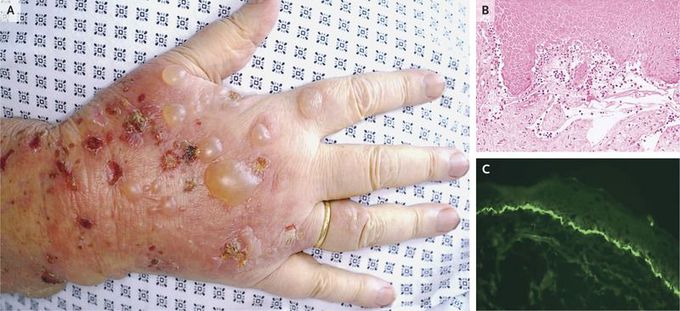


Bullous Pemphigoid
A healthy 73-year-old woman reported severe itching and intense blisters on her forearms, lower back, and legs within the previous 2 weeks. Clinical examination was notable for tenderness, erythema, and blistering, as seen on the back of her hands (Panel A). Laboratory findings included eosinophilia and autoantibodies to bullous pemphigoid antigen 230 (BP230). Subepidermal blistering and eosinophil accumulation in the histologic analysis (Panel B) and linear fluorescence of IgG and complement C3 at the dermoepidermal junction on a direct immunofluorescence assay (Panel C) confirmed the diagnosis of bullous pemphigoid. The age at onset of bullous pemphigoid is commonly 70 years or older. Its pathogenesis is typically defined by autoantibodies against basement-membrane structures, including BP180 and BP230. The patient was given a short course of high-dose systemic glucocorticoids, and treatment with dapsone was started. Blisters were punctured and treated locally with an eosin solution to dry them out. The patient was symptom-free 2 weeks after therapy was initiated, and her condition was stable on dapsone therapy 5 months later.

